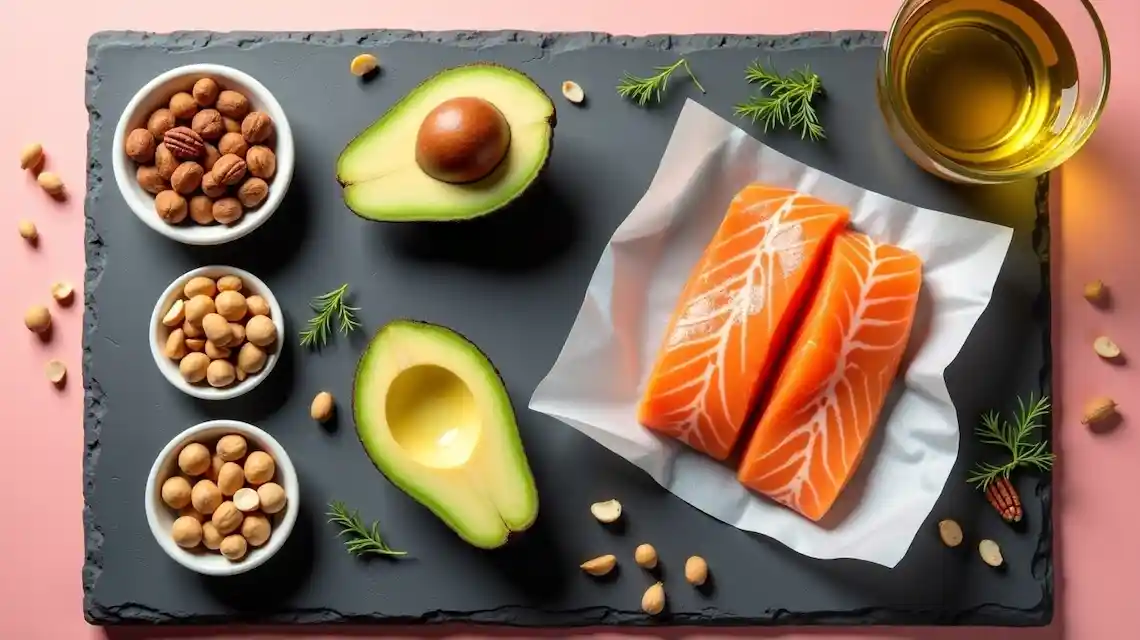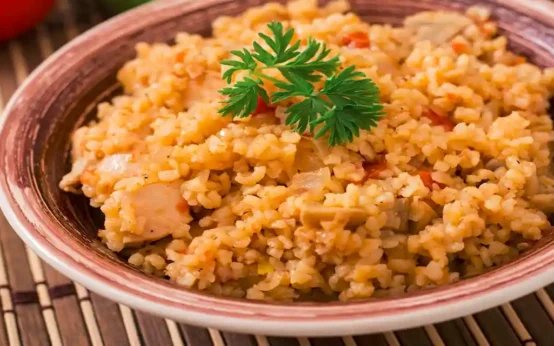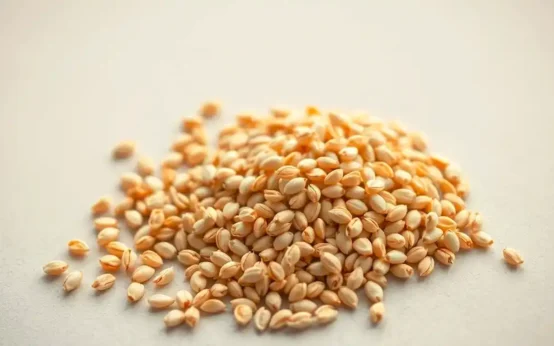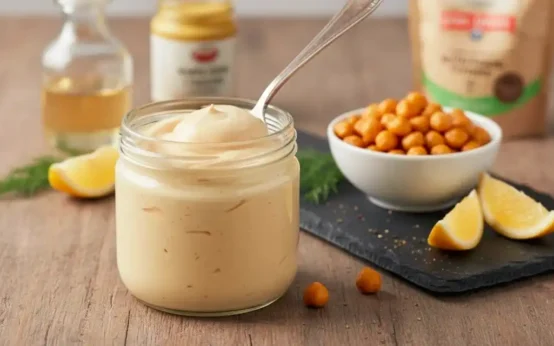Ever wonder why your food tastes different when you switch oils or notice a change in how you feel after eating certain fats? Choosing the right fats for your cooking styles plays a key role in how your meals turn out and how they support your health. The right choice impacts flavor, texture, nutrition, and even how your body uses that fat for energy.
In this post, you’ll get simple tips based on real science for choosing the right fats for your kitchen. We’ll break down types of fats, how each one fits with baking, frying, or sautéing, and what it means for your heart and taste buds. Plus, you’ll see practical choices that work for weeknights or special occasions. If you’re curious about the differences between oils and want a deeper look at the best oils for cooking, you’ll find resources to help you make the right move at mealtime.
Understanding the Types of Fats in Cooking
Picking the right fats can change the way your food tastes and how it supports your well-being. When you dive into the subject of “choosing the right fats for your cooking styles,” you quickly realize not all fats are equal. Some boost heart health while others can raise health risks if used often. The type of fat you use, its source, and its smoke point all play a part in taste and nutrition. Let’s break down the main categories so you can cook with more confidence.
Saturated Fats
Saturated fats are typically solid at room temperature and come mostly from animal sources. You’ll find these fats in butter, lard, and fatty cuts of beef or pork. They’re also in some plant oils, like coconut and palm oil.
Key characteristics:
- Smoke point: Medium (works for baking or roasting, but not ideal for high-heat frying)
- Flavor: Rich and creamy, which adds depth to sauces and baked goods
- Health: When eaten in excess, these fats can raise LDL cholesterol, so it’s best to use them sparingly
Common uses:
- Baking pastries, cookies, and cakes
- Sautéing vegetables for added richness
- Spreading on toast or adding a pat to veggies
Unsaturated Fats
Unsaturated fats come in two main forms: monounsaturated and polyunsaturated. They are often liquid at room temperature and found mainly in plant-based oils, nuts, and seeds.
Monounsaturated Fats
You’ll spot these in olive oil, canola oil, avocados, and some nuts. These fats have a reputation for supporting heart health when they replace saturated fats.
Key characteristics:
- Smoke point: Varies (extra-virgin olive oil is best for dressings; refined versions can handle more heat)
- Flavor: Often mild, sometimes fruity or nutty
- Health: Can help lower LDL cholesterol, making them a smart option
Popular uses:
- Salad dressings
- Light sautéing
- Drizzling over finished dishes
Polyunsaturated Fats
These include omega-3 and omega-6 fats, both important for the body. You’ll find them in sunflower oil, corn oil, walnuts, flaxseed, and fatty fish.
Key characteristics:
- Smoke point: High in many oils (suitable for frying and stir-frying)
- Flavor: Light and clean, though some, like walnut oil, have a distinct taste
- Health: Linked to reduced inflammation and better heart health, especially omega-3s
Great for:
- Stir-frying and deep-frying
- Making marinades and dips
- Cooking fish and chicken
Trans Fats
Trans fats are the kind you want to avoid. These mostly come from industrial processing, where liquid oils are turned into solid fats (think margarine or shortening). Some naturally occur in small amounts in red meat and dairy, but the bulk in our diets comes from packaged snacks, baked goods, and fried fast foods.
Key characteristics:
- Smoke point: Not usually used for direct cooking at home; often hidden in processed foods
- Flavor: Neutral but used for texture in baked goods
- Health: Raise LDL (bad) cholesterol and lower HDL (good) cholesterol. Even small amounts increase risk for heart disease
Where you’ll see them:
- Store-bought pastries, crackers, cookies
- Microwave popcorn
- Fried fast foods
How to Choose Fats for Your Cooking Styles
Each fat and oil has a specific smoke point, which is the temperature where it starts to burn. When you choose the right fat for your recipe, look for:
- The cooking method (baking, frying, sautéing, grilling)
- The flavor profile you want (neutral or pronounced)
- Your health goals
Mixing up your fats and oils can give you a wider range of flavors and nutrients. For better well-being, swap saturated and trans fats for more unsaturated fats. For more on the impact of healthy fats on how you feel, read about the healthy fats and mood connection.
Understanding the types of fats in your kitchen helps you make choices that suit your style, your health, and your taste buds.
Matching Fats to Cooking Methods: Practical Guidelines
Understanding which fats to use for each cooking style makes a difference in the taste, nutrition, and safety of your food. Your choice comes down to three things—smoke point, flavor, and how each fat reacts to heat. Matching the right fat to your recipe not only helps you create better meals but also supports your health goals.
High-Heat Cooking: Frying and Roasting
When frying or roasting, go for fats that can handle high temperatures. If you use a fat with a low smoke point, it can break down and give your food a burnt taste or even create harmful compounds.
Some solid choices for high-heat methods:
- Avocado oil: A high smoke point (over 500°F), light flavor, and filled with heart-healthy monounsaturated fats.
- Refined olive oil: Not extra-virgin, but the lighter, refined type can handle higher heat with a mild taste.
- Peanut oil: Supports deep-frying with a high smoke point and a nutty flavor, great for stir-fries.
- Canola oil: Mild, budget-friendly, and safe up to about 400°F.
Cooking tips:
- Use these oils for stir-frying, searing meat, or crisping vegetables in the oven.
- Maximize both safety and nutrition by discarding oils that start to smoke.
Medium-Heat Cooking: Sautéing and Baking
Medium heat is where both flavor and gentle cooking come together. Sautéing onions or baking banana bread both benefit from oils that add a touch of flavor without overpowering the dish or breaking down.
Good fats for medium heat:
- Virgin olive oil: Lower smoke point than refined, but perfect for sautéing, infusing dishes with a fruity, grassy note.
- Butter: Adds rich flavor to baked goods or pan sauces, but watch the heat so it doesn’t burn.
- Coconut oil: Works for baking or light sautéing, with a tropical flavor and stable structure.
- Ghee (clarified butter): A higher smoke point than regular butter, lending a nutty essence to recipes.
Keep in mind:
- Mix oils in baking for both texture and flavor.
- Use a gentle hand with butter for both health and success in your recipes.
- Many oils can double for baking and light sautéing, but avoid overheating olive oil or butter.
Low-Heat and No-Heat Cooking: Dressings, Drizzling, and Finishing
Low temperatures let the natural flavors of fats shine and protect their delicate nutrients. Use the best-tasting oils here, as they take center stage on salads, steamed veggies, and plated dishes.
Top picks for dressings and drizzling:
- Extra-virgin olive oil: Bursting with antioxidants and a bright, bold flavor.
- Walnut or flaxseed oil: Delicate, with a unique taste, packed with omega-3s.
- Toasted sesame oil: Adds depth to Asian sauces and cold salads.
Ways to boost flavor and nutrition:
- Use these oils over steamed fish or cooked grains.
- Add to dips or vinaigrettes for a health kick.
- Protect these fats from heat to maximize their benefits and flavor.
For many people, simple swaps in the kitchen make a big difference. If you’re looking to improve your overall routine, learning which fat fits each method is as important as cutting out what doesn’t work for your goals. You can discover the benefits of clean eating if you want your kitchen habits to go beyond just picking healthy fats.
Quick Reference: Best Fat Choices by Cooking Style
Here’s a simple list for easy decision-making:
- High-heat frying/roasting: Avocado oil, refined olive oil, peanut oil, canola oil
- Medium-heat sautéing/baking: Virgin olive oil, butter, coconut oil, ghee
- Low-heat dressings/drizzling: Extra-virgin olive oil, walnut oil, flaxseed oil, toasted sesame oil
Choosing the right fats for your cooking styles doesn’t have to feel complicated. Just match the method to the fat, and you’ll serve up food that tastes great, supports your health, and suits your personal style in the kitchen.
The Role of Healthy Fats in Overall Well-Being
Healthy fats do much more than just give your food flavor and texture—they play an essential part in your body’s daily functions. Choosing the right fats for your cooking styles helps you get the best out of your meals, not only in taste but in supporting your heart, brain, and overall wellness. Think of healthy fats as key building blocks for your body and mind, powering everything from your brain cells to your mood.
Heart Health Benefits
Not all fats are equal when it comes to your heart. Swapping out saturated fats and trans fats for healthier choices like olive oil, avocado oil, and nuts can help support better cholesterol levels. These unsaturated fats—both monounsaturated and polyunsaturated—help keep your arteries clear and flexible.
- Monounsaturated fats, found in olive oil and avocados, help lower bad (LDL) cholesterol while raising good (HDL) cholesterol.
- Polyunsaturated fats, like those in walnuts and flaxseed, bring in omega-3s that reduce inflammation and may help control blood pressure.
- If you want a real-life example, look at the how to eat a balanced diet, which is packed with these healthy fats. This eating pattern is linked to fewer heart problems and longer life.
Choosing the right fats for your cooking styles can turn every meal into a win for your heart.
Brain Function and Cognitive Support
Your brain is nearly 60% fat, and it relies on the right kinds for sharp thinking and memory. Healthy fats, like those found in fish, nuts, flaxseed, and some plant oils, support brain cell membranes and help with important signaling.
- Omega-3 fatty acids are especially good for the brain. They may help slow age-related decline and boost mental focus.
- Diets low in healthy fats can leave you feeling foggy or tired, so aiming for regular servings of fatty fish, walnuts, or chia seeds makes a real difference.
- Simple moves in the kitchen—like choosing canola or olive oil over butter for a stir-fry—add up over time when it comes to brain health.
Mood and Emotional Balance
Healthy fats even impact how you feel day-to-day. Fats help regulate hormones and manage your body’s stress response. When you include more omega-3s and unsaturated fats, you may notice improvements in your mood and energy.
- Omega-3s in particular may help lower the risk of feeling down or anxious.
- Consistent consumption of healthy fats supports stable energy levels and resilience during busy or overwhelming times.
- For a deeper look at the science, check out the impact of processed foods have on your body.
Healthy eating patterns that include these smart fats often come with fewer mood swings and more steady productivity.
Whole-Body Wellness and Healthy Eating Patterns
Including healthy fats in your meals helps your body absorb fat-soluble vitamins like A, D, E, and K. These nutrients are key for vision, immunity, and smooth skin. Beyond individual benefits, people who choose unsaturated fats more often tend to stick to eating styles that encourage overall wellness.
- The Mediterranean diet stands out, full of olive oil, nuts, and fish. This way of eating doesn’t just support healthy cholesterol, it also helps with weight control and maintaining healthy blood sugar.
- Studies link eating more good fats with a lower chance of chronic disease and a higher rate of healthy aging.
- Shifting to better fats in your cooking supports habits that go beyond flavor—they build a solid foundation for better health.
If you’re curious about the details or want practical ideas, explore these mediterranean diet benefits for real-world results.
Choosing the right fats for your cooking styles isn’t just about what’s on your plate tonight, it’s about the energy, focus, and long-term well-being you get from smarter kitchen choices. With every swap, from your salad dressing to your skillet, you make a move toward a stronger, healthier you.
Conclusion
Choosing the right fats for your cooking styles can truly change both the flavor and nutrition of your meals. Small swaps—like reaching for avocado oil when frying or drizzling extra-virgin olive oil over salads—make food satisfying while giving your body what it needs. Being aware of which fats perform well with certain cooking methods helps you eat well and feel your best.
Build your kitchen confidence by experimenting with new healthy fats and seeing how they impact your favorite dishes. Each step toward smarter choices adds up to better well-being over time.
Try rotating in different oils or spreads this week and notice the taste, texture, and how you feel. To give your healthy habits an even stronger foundation, explore foods that raise good HDL cholesterol and learn how simple food choices can power up your meals.
FAQ:
What does “smoke point” mean, and why does it matter?
The smoke point is the temperature when a fat starts to smoke and break down. Oils with higher smoke points work best for frying and searing. If you heat oil past its smoke point, it can taste burnt and may lose nutrients.
Which oils should I use for high-heat cooking?
Choose oils like avocado, refined peanut, sunflower, or canola for grilling, stir-frying, and deep-frying. These handle high heat without breaking down too fast.
What are the best fats for baking?
Butter, coconut oil, and some vegetable oils (like canola or sunflower) work well for baking. Butter gives a rich flavor, while oils can make baked goods lighter and moist.
Should I avoid saturated fats like butter or coconut oil?
Eating lots of saturated fat can raise cholesterol for some people. Use these fats in moderation, and mix in unsaturated options like olive or canola oil when you can.
Is olive oil good for sautéing and roasting?
Yes, extra virgin olive oil works for low to medium heat. For higher temperatures, try regular olive oil (not extra virgin), as it has a higher smoke point.
Which fats are healthiest for salad dressings or dips?
Use extra virgin olive oil, walnut oil, or avocado oil for dressings or finishing dishes. They add flavor and healthy fats but shouldn’t be heated too much.
Are margarine and shortening good choices?
Most margarines have less saturated fat than butter, but watch for trans fats, which are unhealthy. Shortening is high in saturated fat and is best saved for flaky pastries, not daily cooking.
How do I store cooking oils and fats?
Keep oils in a cool, dark spot. Some, like walnut or flaxseed oil, belong in the fridge. Butter keeps best in the fridge or freezer.
Can I reuse cooking oil?
You can reuse oil a few times if you strain it and store it properly. But toss it if it smells bad, gets dark, or foams when you heat it up.
What signs show that my oil or fat has gone bad?
Look for odd smells, off colors, or a sticky feel. Rancid oil or fat tastes bitter. When in doubt, throw it out.
Does fat type change the taste of food?
Yes. Butter brings rich, creamy notes. Olive oil is fruity and peppery. Neutral oils like canola let other flavors shine. Try different fats to find what you like best.
Is animal fat (like lard or tallow) safe for cooking?
Lard and tallow are fine for frying or making pie crusts, but they’re high in saturated fat. Use them sometimes, not every day, and balance with unsaturated oils.
Do oils lose nutrition when heated?
Some do. Heating extra virgin olive oil too much can lower its antioxidants. Seed oils lose some nutrients at high heat. Stick to the right oil for your cooking style.



 How to Cook Bulgur
How to Cook Bulgur  Importance of Hydration for Your Brain, Body, and Everyday Energy
Importance of Hydration for Your Brain, Body, and Everyday Energy  Health Benefit of Sesame Seed
Health Benefit of Sesame Seed  Healthiest Breakfast Cereal for Children
Healthiest Breakfast Cereal for Children  Anxiety Management Techniques
Anxiety Management Techniques  Vegan Oil Free Mayonnaise Recipe
Vegan Oil Free Mayonnaise Recipe